For decades forum sages have been telling us that a Total War-style strategy game with WWI’s famously static and linear Western Front trench warfare at its core wouldn’t work. The Great War proves these Cassandras wrong. While the action-packed real-time scraps served up by Petroglyph’s latest are arguably too breathless, brief, and shrunken to qualify as ‘wargames’, because they come with a history-steeped, turnbased strat layer and incorporate something almost no wargame offers – DIY trench construction – The Great War isn’t without grog appeal.
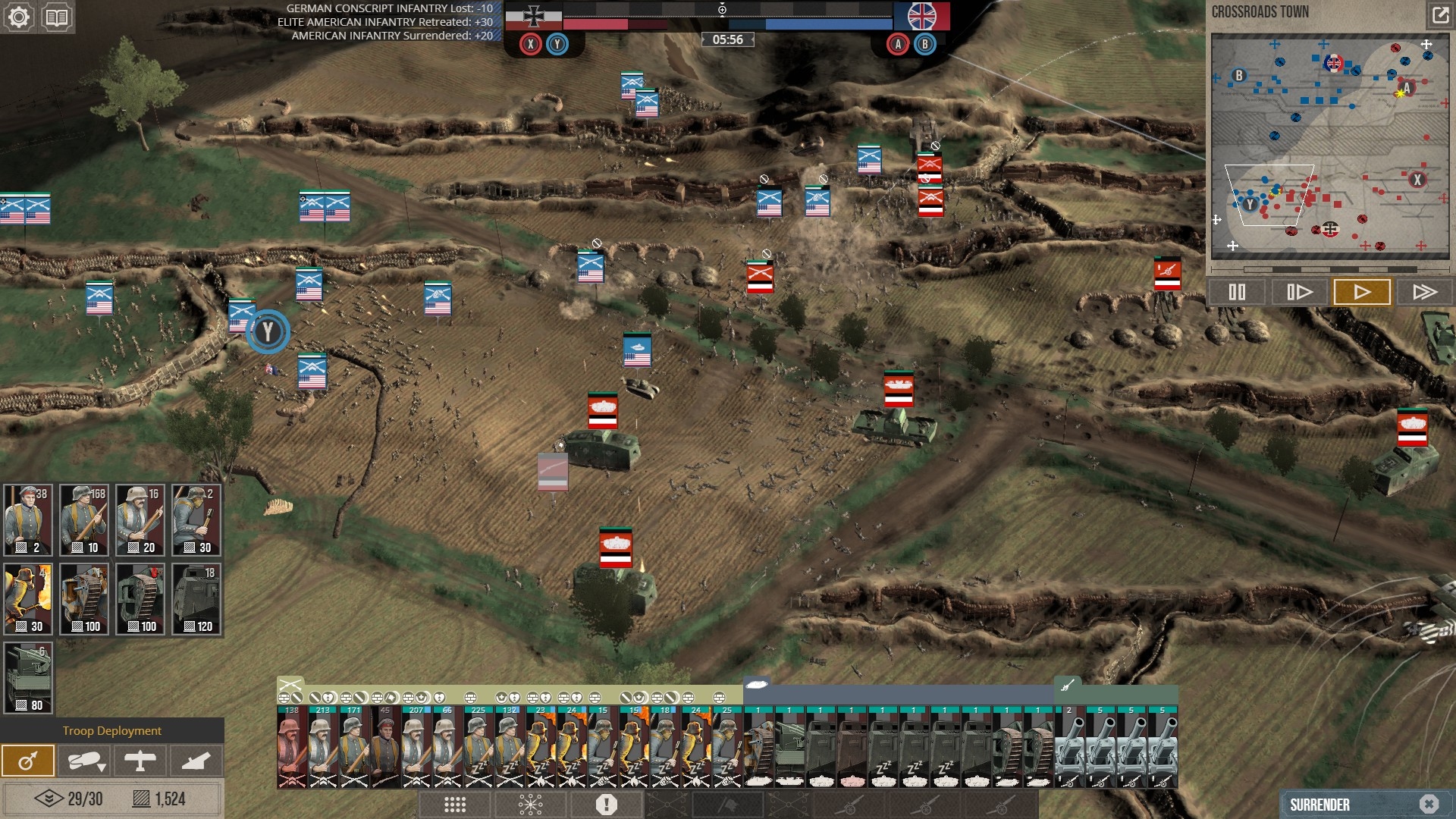
It took me a while to discover that appeal. I spent my first couple of hours with this undemanding* £30 mass murder sim frowning at frenetic skirmish mode contests speckled with the improbable.
* In a hardware sense. On medium graphics settings The Great War runs fluently on my elderly Windows 7 rig.
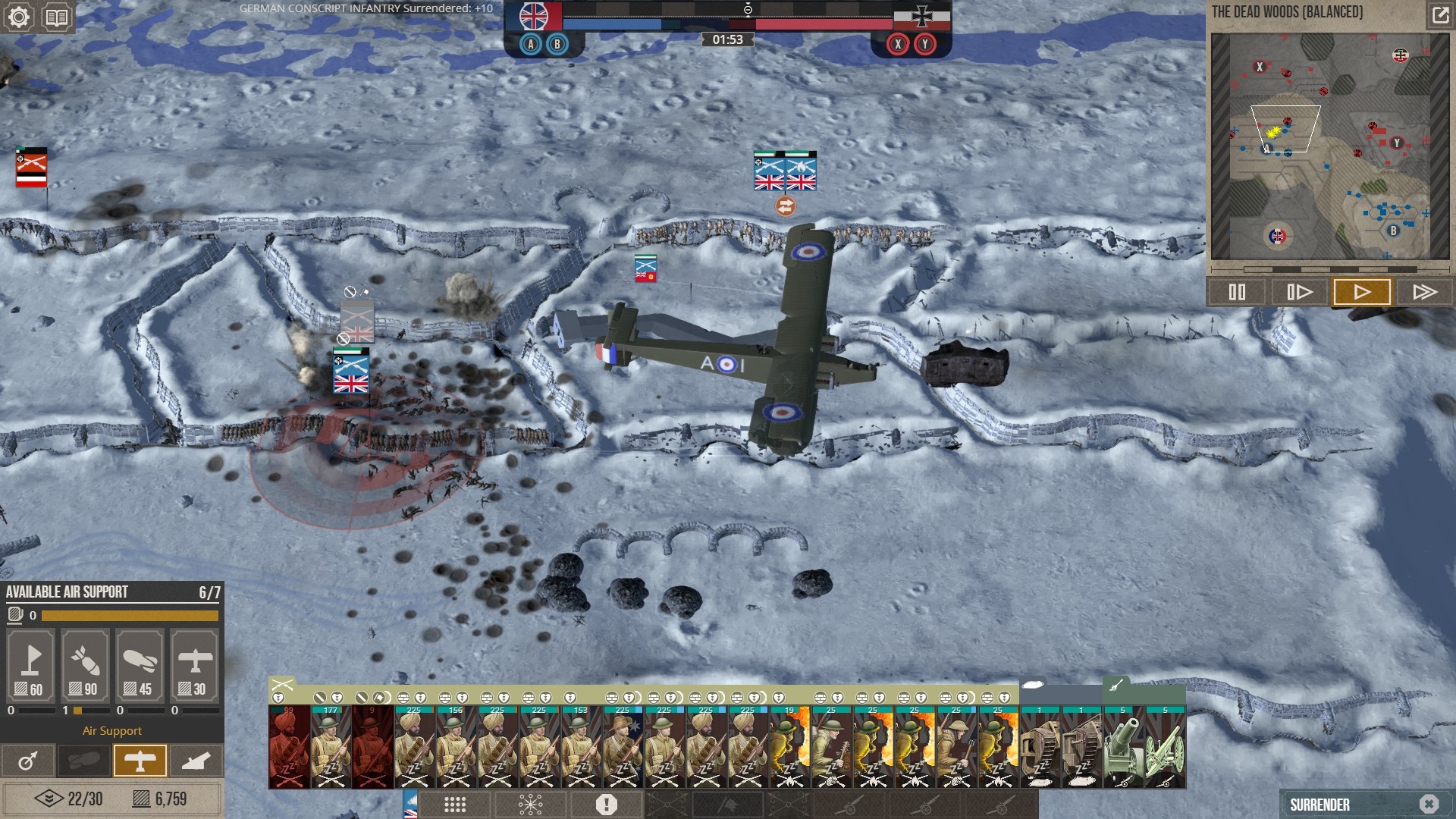
Unless you hand-pick forces in skirmishes, you invariably find yourself orchestrating engagements awash with flamethrowers, multi-engined bombers, and remarkably nippy/reliable tanks. Selecting an ‘early war’ time frame or an ‘infantry’ template doesn’t help.
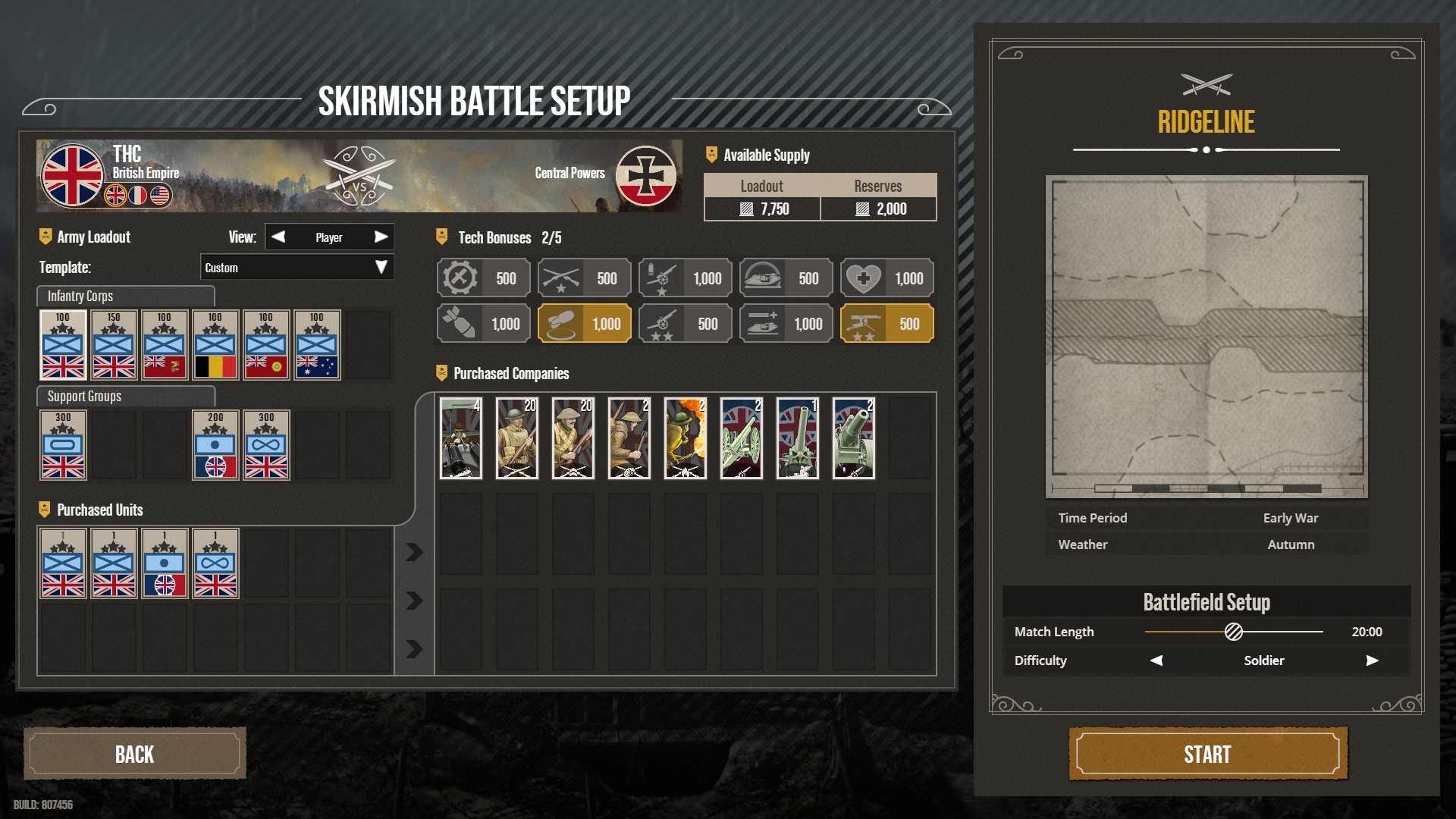
All skirmishes start with a map’s Control Points equally distributed between the two participants. In other words you’re expected to grab enemy CPs and guard your own. I searched in vain for a ‘play as defender’ button, and, even with active-pause and a half-speed option available, struggled to adjust to the lightning-quick demises of my advancing infantry companies.
Early on, the low camera ceiling and the clumsy camera rotation also rankled. Yes, it would be fair to say The Great War and I didn’t exactly hit it off initially.
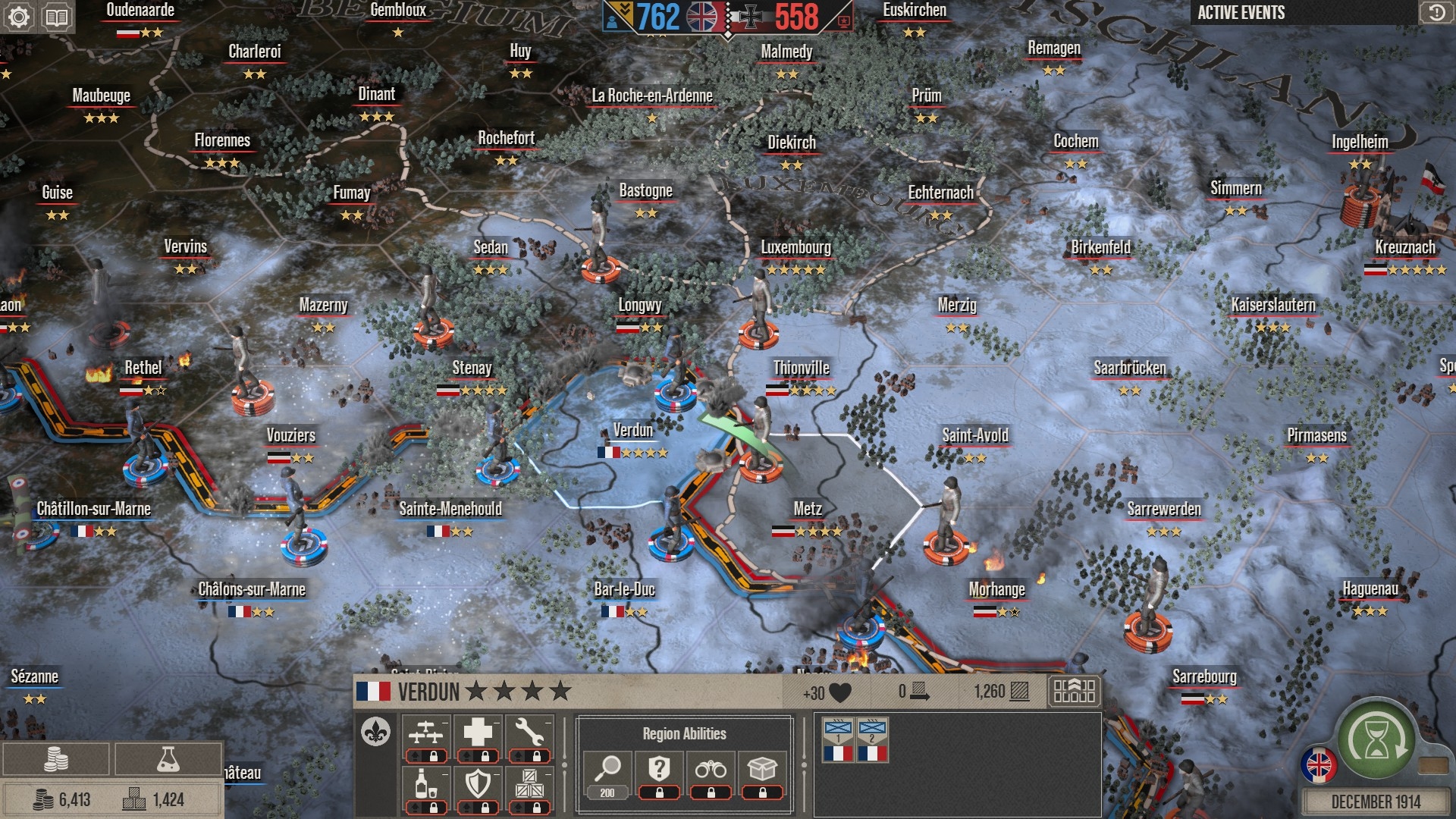
Only when I embarked on my first campaign* did the disappointment begin to disperse. Unsurprisingly perhaps, given the wargame design luminary and the WWI enthusiast looking over lead designer Chris Becker’s shoulder, The Great War’s campaign layer is no flimsy afterthought.
* All campaigns begin after The Race to the Sea.
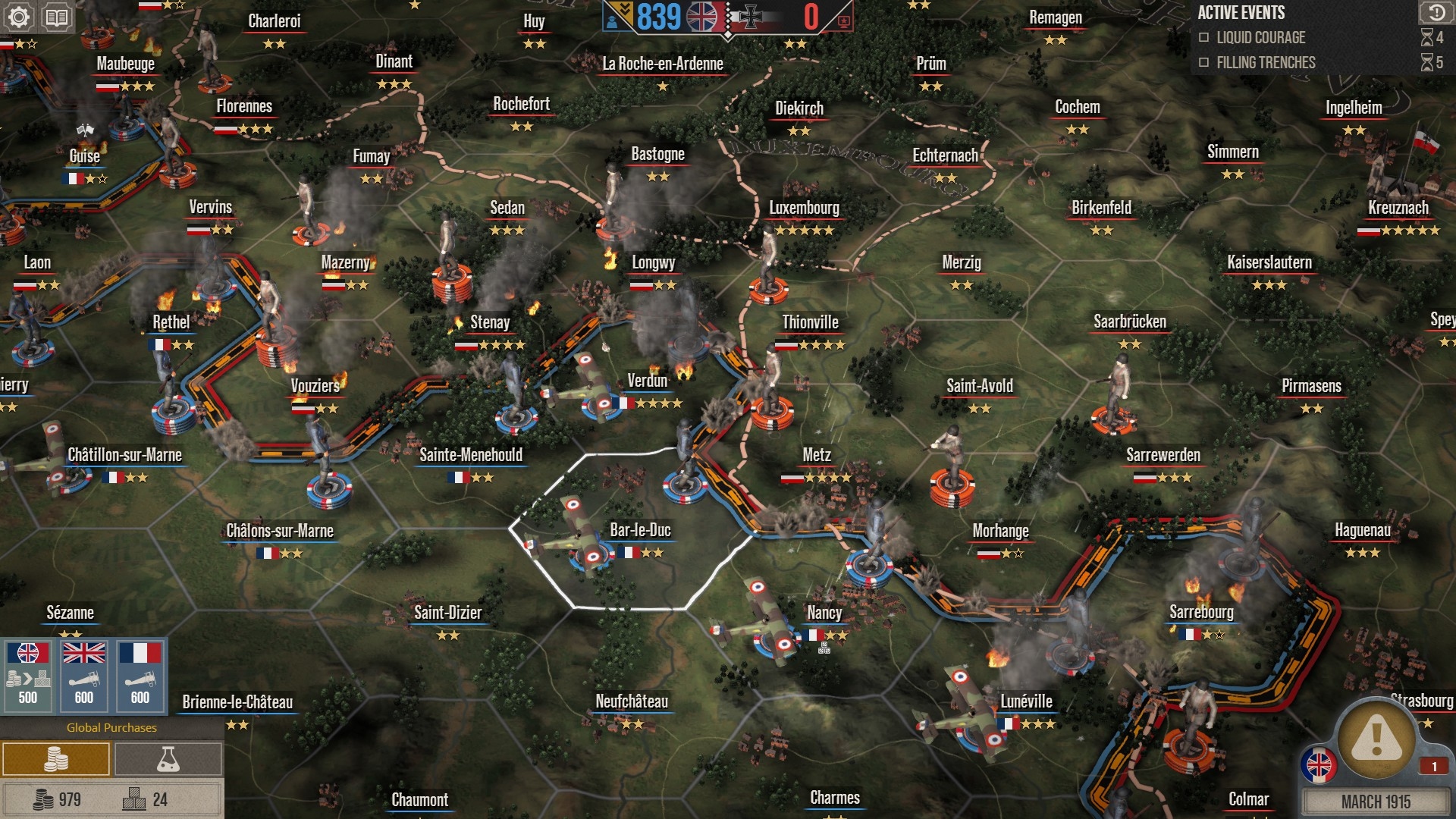
It’s obvious Chris and Co. have done plenty of homework. For example, all activity on the hexed, weather-impacted theatre map is funded by Supply*, a purchasable resource that neatly represents both ammo and manpower. As offensives cost considerable Supply to mount, without careful shepherding of resources, launching multiple simultaneous sizeable attacks often isn’t possible. Right from the outset you’re aware of the crippling economic, logistical, and HR burden of total war.
* Supply also finances trench construction, deployed units, and reinforcements in battles.
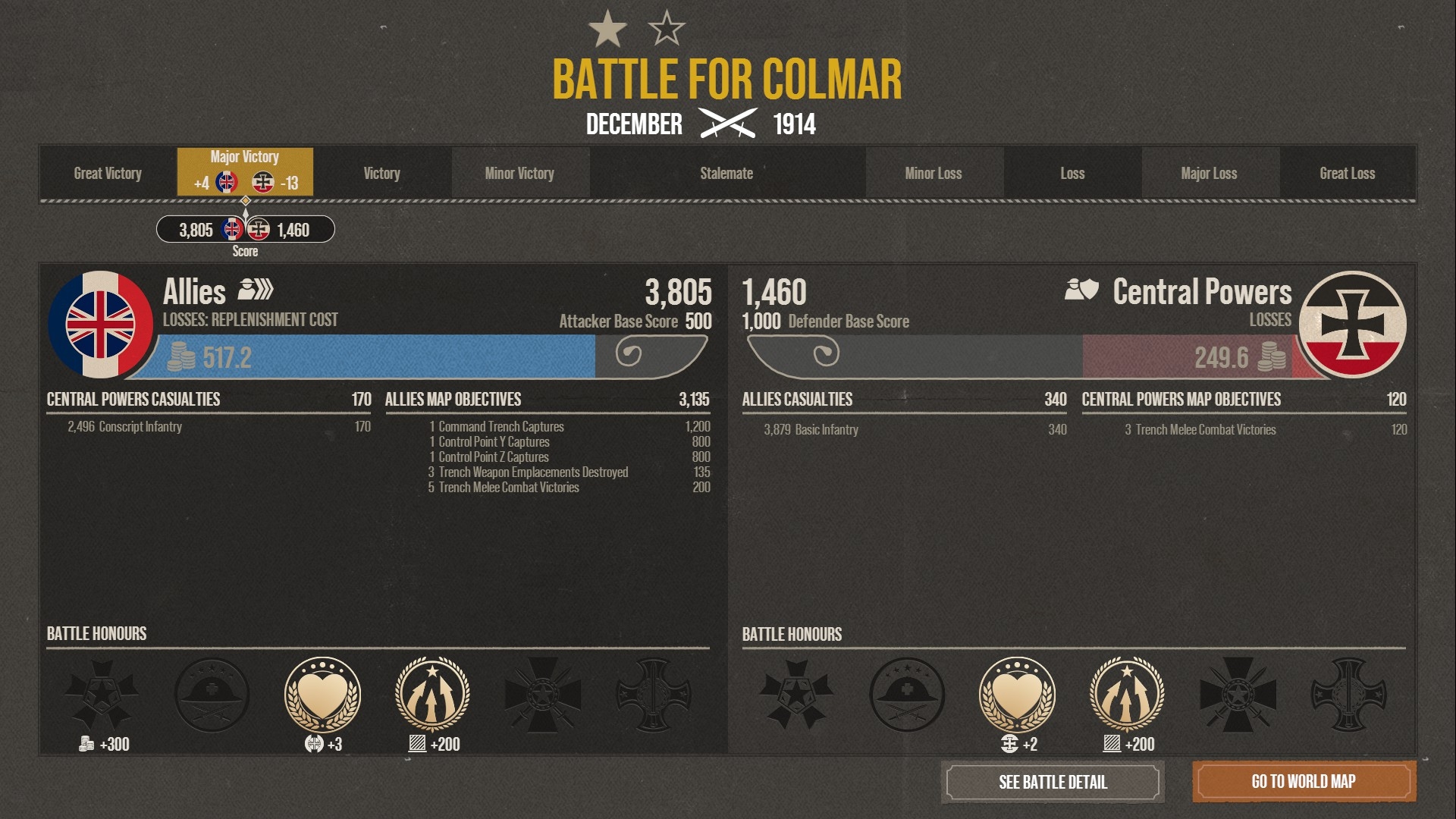
Another inspired touch is the way hexes can’t be conquered with a single battlefield triumph. In order to add a new angular dent to the frontline, it’s necessary to win two or more ‘Great Victories’ in an enemy-held hex. The exact number of GVs is determined by the number of stars in the target region, and, as stars regenerate during quiet turns, there’s little point engineering a big win if you can’t swiftly follow it up with another.
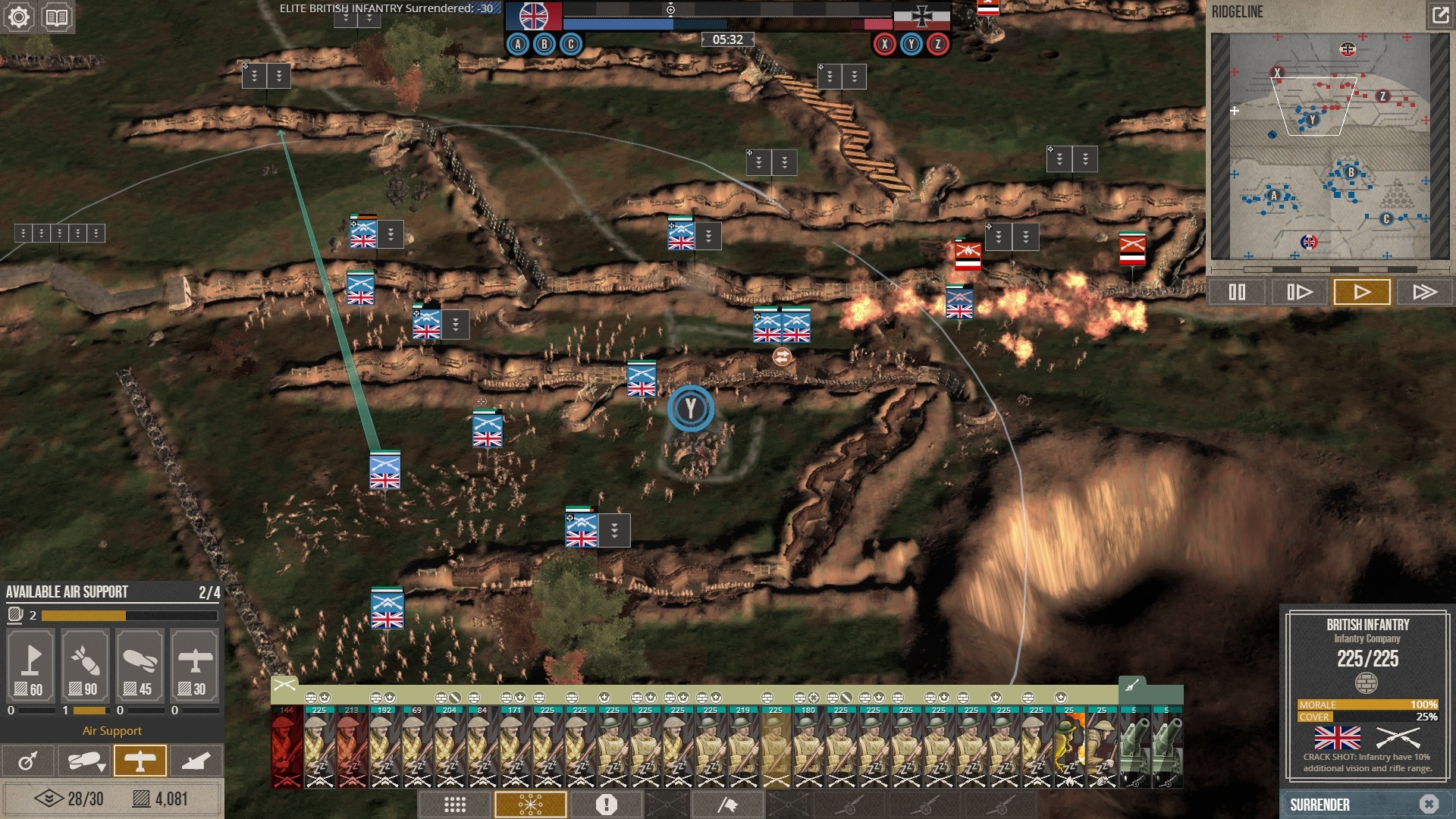
The combined effect of Supply, the star system, and an unusual approach to recruitment* – a frontline as animated as a dead snake – is, of course, historically appropriate. What prevents the stubborn stalemate from generating player boredom or despair is the fact that you don’t need to gain territory in order to win the war. Whittle away your opponent’s ‘National Will’ through a series of less spectacular battlefield successes, and he will eventually throw in the towel.
* New infantry divisions are acquired through campaign events and tech tree progress rather than purchased at will.
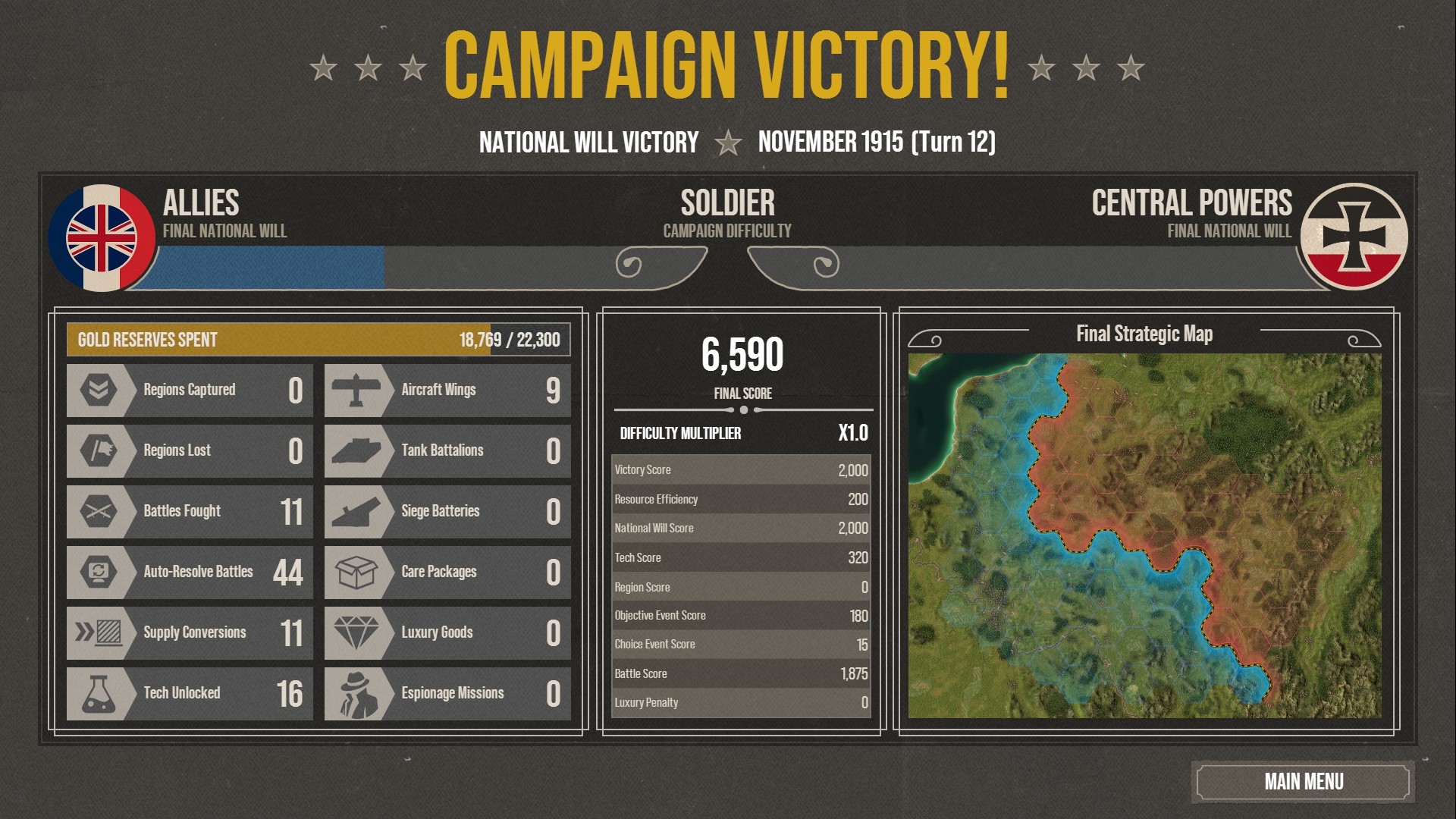
By picking fights carefully, auto-resolving the vast majority of my attacks, and personally orchestrating all defensive battles (Naturally, defending is far easier than attacking) I achieved my first campaign victory relatively quickly. In November 1915, after just 55 battles none of which caused a hex to change hands, the wiggly Western Front I’d contemplated for seven or eight hours fell silent.
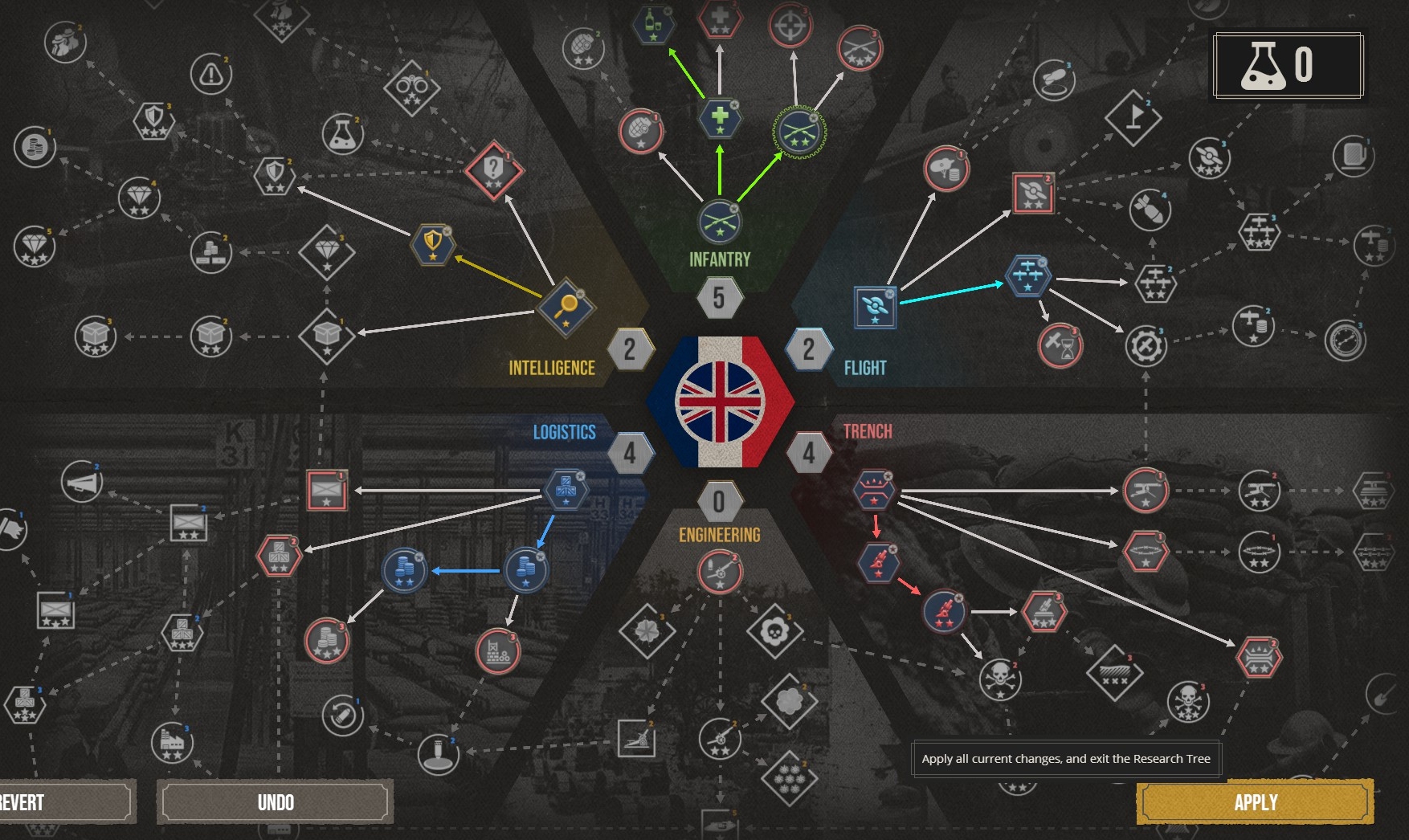
Presumably, switching sides or choosing one of the two difficulty settings higher than ‘soldier’, for my next campaign will stiffen the challenge and allow me to explore more of the game’s impressively leafy tech tree. While I’m in no hurry unlock the wind-oblivious* poison gas or the gamey tanks I encountered in skirmishes, the thought of accessing new arty options (Siege guns, creeping barrages, smoke shells…), mines, fortifications, troop types, and economic levers is enticing.
* Wind isn’t modelled.
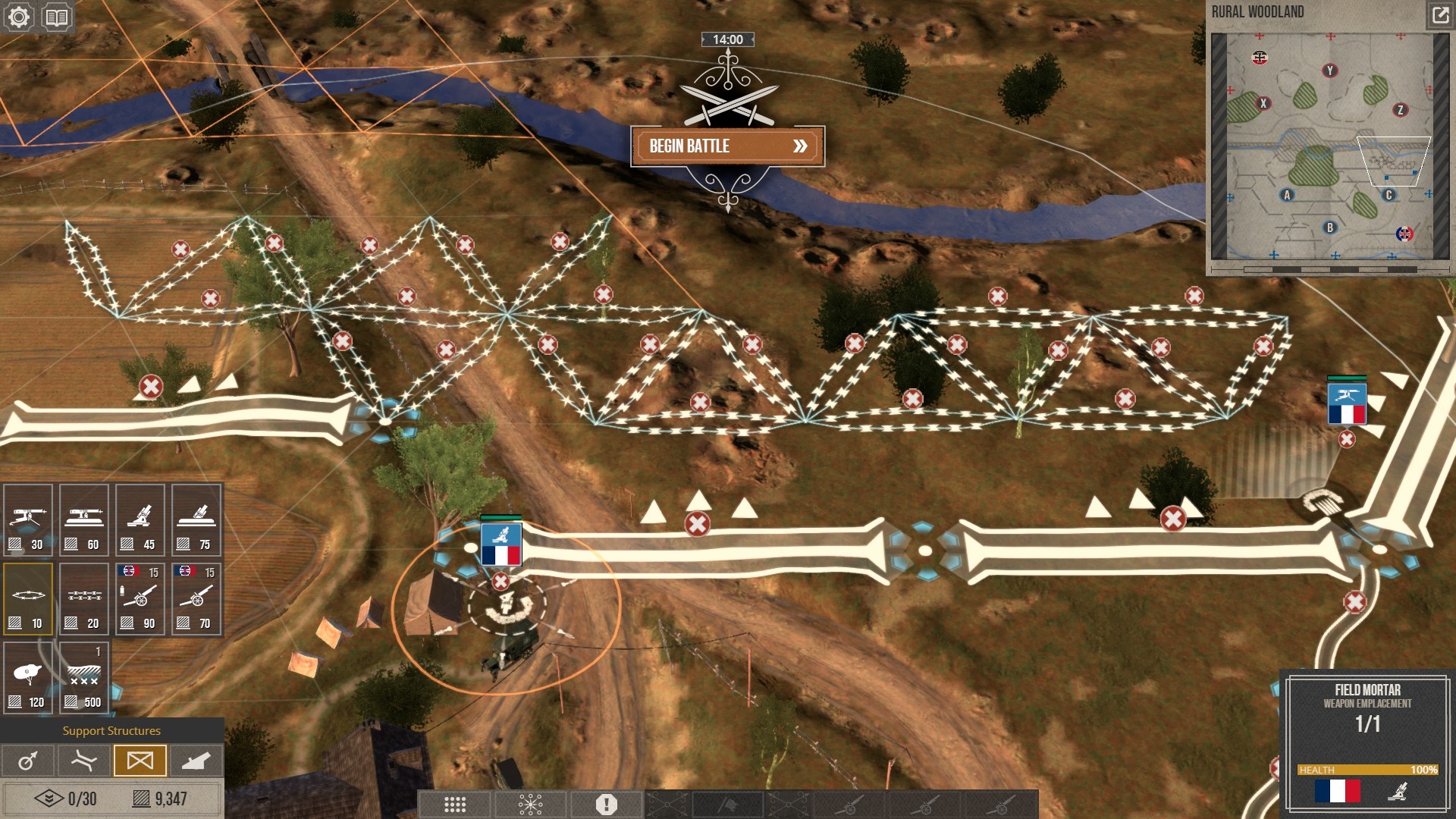
There’s nothing to stop an RTS-averse player auto-resolving all of their campaign battles. However, take this path and you are going to miss out on lots of Stronghold-style construction fun, and suffer numerous unnecessary defeats. On several occasions during the last few days, while defending I’ve achieved useful draws despite a ‘Major Loss’ or ‘Great Loss’ prediction. I’d like to say these against-the-odds upsets were all down to the cunning way I arranged trenches* and positioned MG nests and mortars prior to assaults, and marshalled my forces once the clock had started, but the truth is sometimes flawed enemy AI played a part.
* All fortifications are persistent.
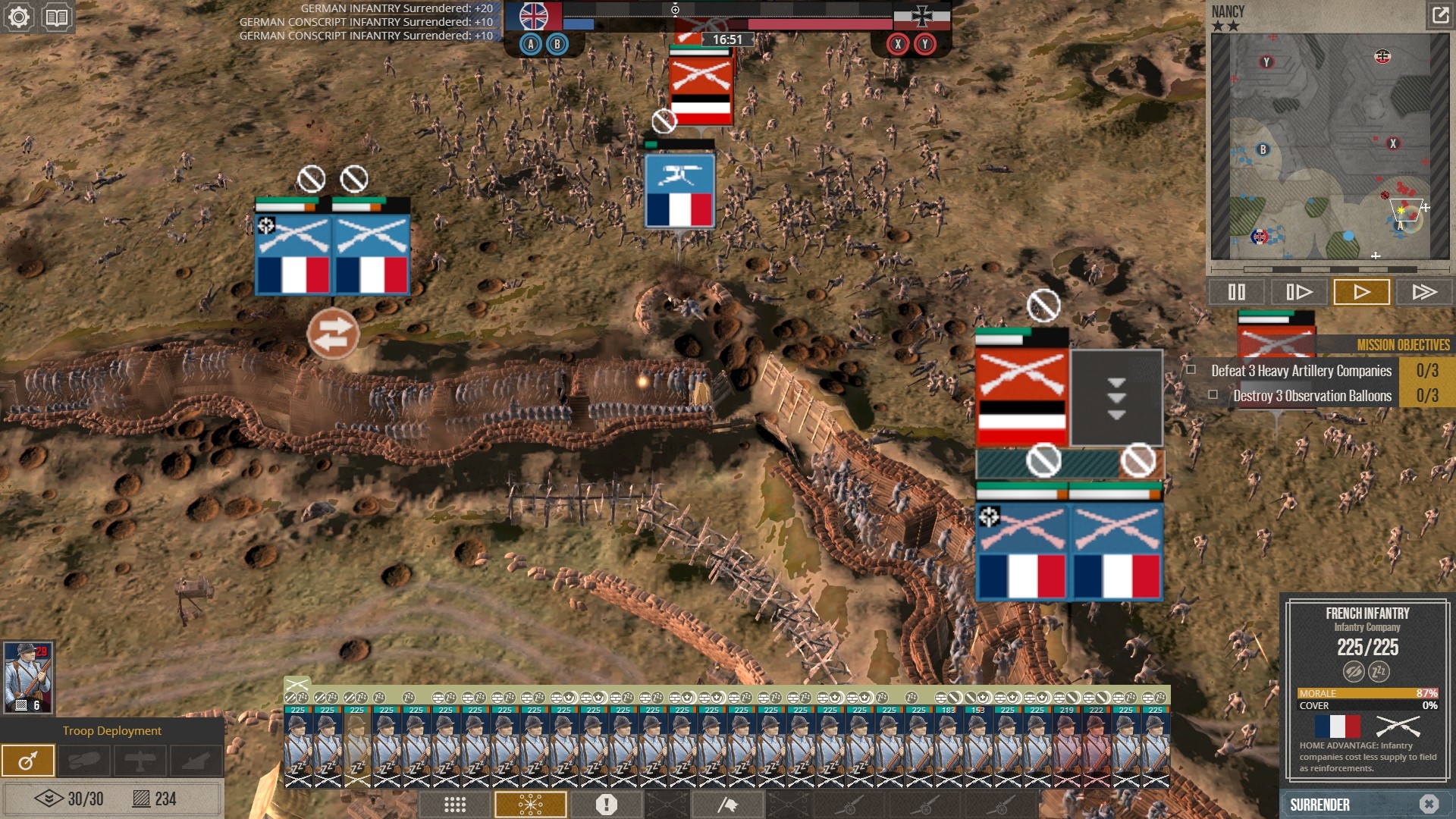
Although the CPU usually employs artillery and attack waves with aplomb, and, if it sees an opportunity, will have a stab at flanking a CP, its failure to scout, and protect batteries properly sometimes proves expensive. Early on I learned it was profitable to place riflemen in patches of woodland bordering potential avenues of advance. Often these hard-to-detect ambushers, managed to bushwhack four or more companies of Control Point-fixated foes before being eliminated.
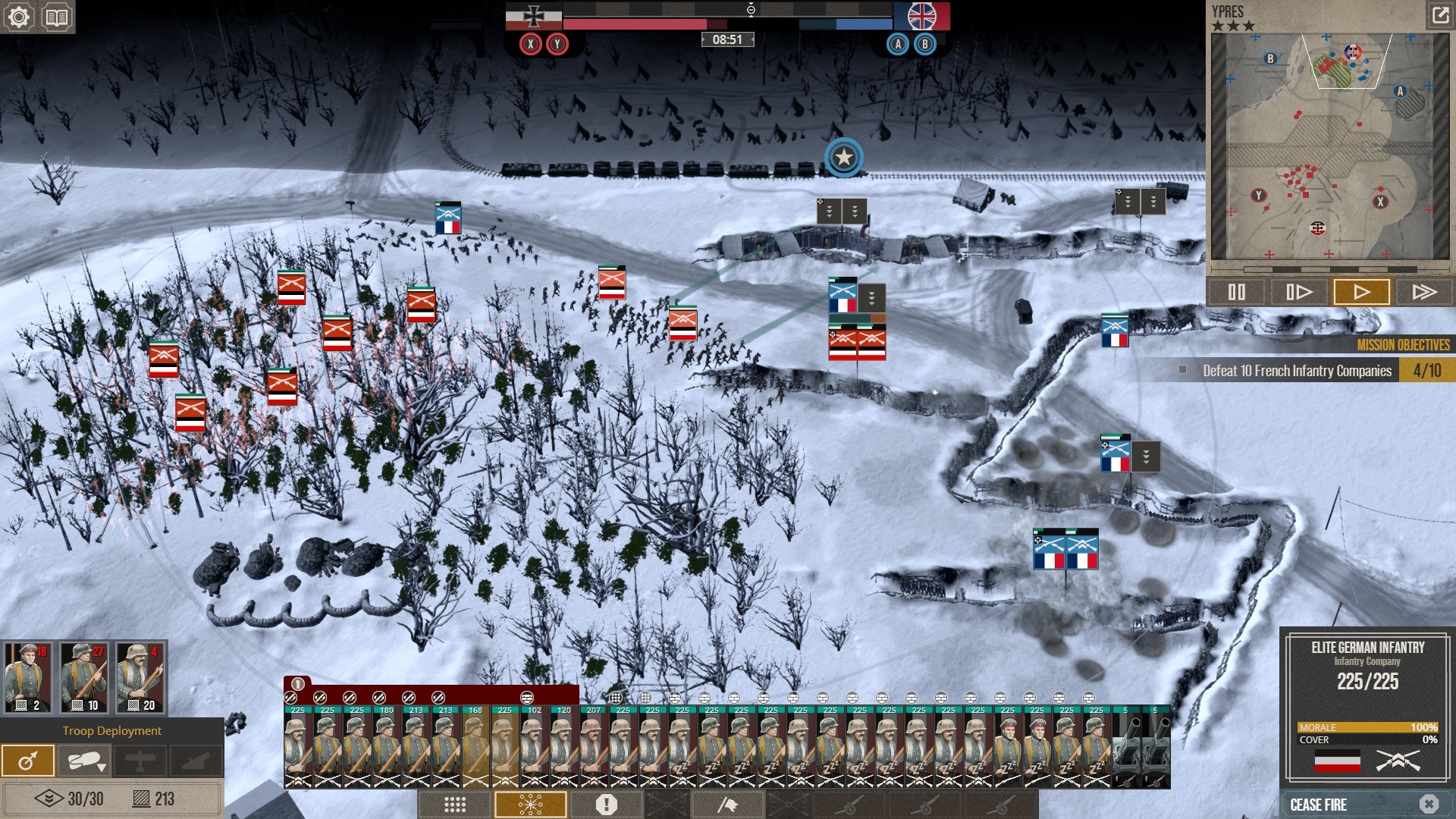
Does the AI ever replace weakened and wavering troops during quiet interludes*? I haven’t noticed it doing so, but as exposed units are wiped out with shocking rapidity and I’m generally fully focused on giving orders to my own troops, I can’t say for sure it never happens. The CPU definitely understands the value of suppression. Advancing enemy infantry regularly benefit from timely bombardments.
* Good practice as withdrawn/replaced units don’t erode scores.
Though there’s plenty of clever shorthand in the battle layer (I particularly like the treatment of observation balloons and MGs), dyed-in-the-wool wargamers may find themselves hankering for a few extra infantry formation options, and for more meaningful mud and shell craters.

Patient grogs who pride themselves on force preservation are probably going to have the hardest time warming to The Great War. This is a game in which sometimes – especially when attacking – guile, alacrity, and vigilance simply aren’t enough; in order to take or hold a CP you must sacrifice soldiers… throw men into the mincer.
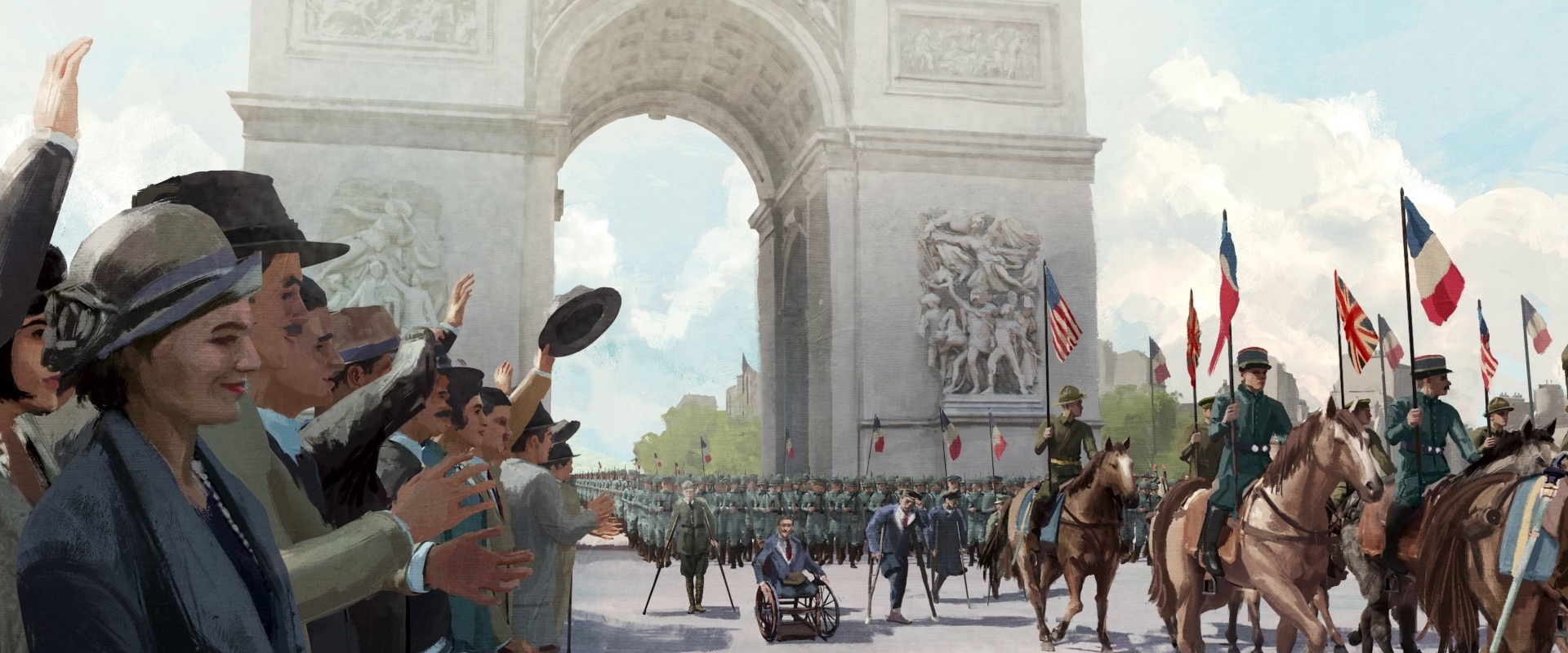
Obviously it would have been wrong for Petroglyph to have implied that there were relatively painless way for armies to have made progress on the Western Front from 1915 onwards, but I do wonder if they could have communicated the dreadful human cost of the conflict a tad better. Little things like battlefield bodies that vanish almost instantly, campaign results screens that don’t include KIA or WIA totals, and load screen photos entirely (?) free of death and disfigurement (the campaign victory illustration shown above is a rare exception), unwittingly and unnecessarily sanitise the War to End All Wars.
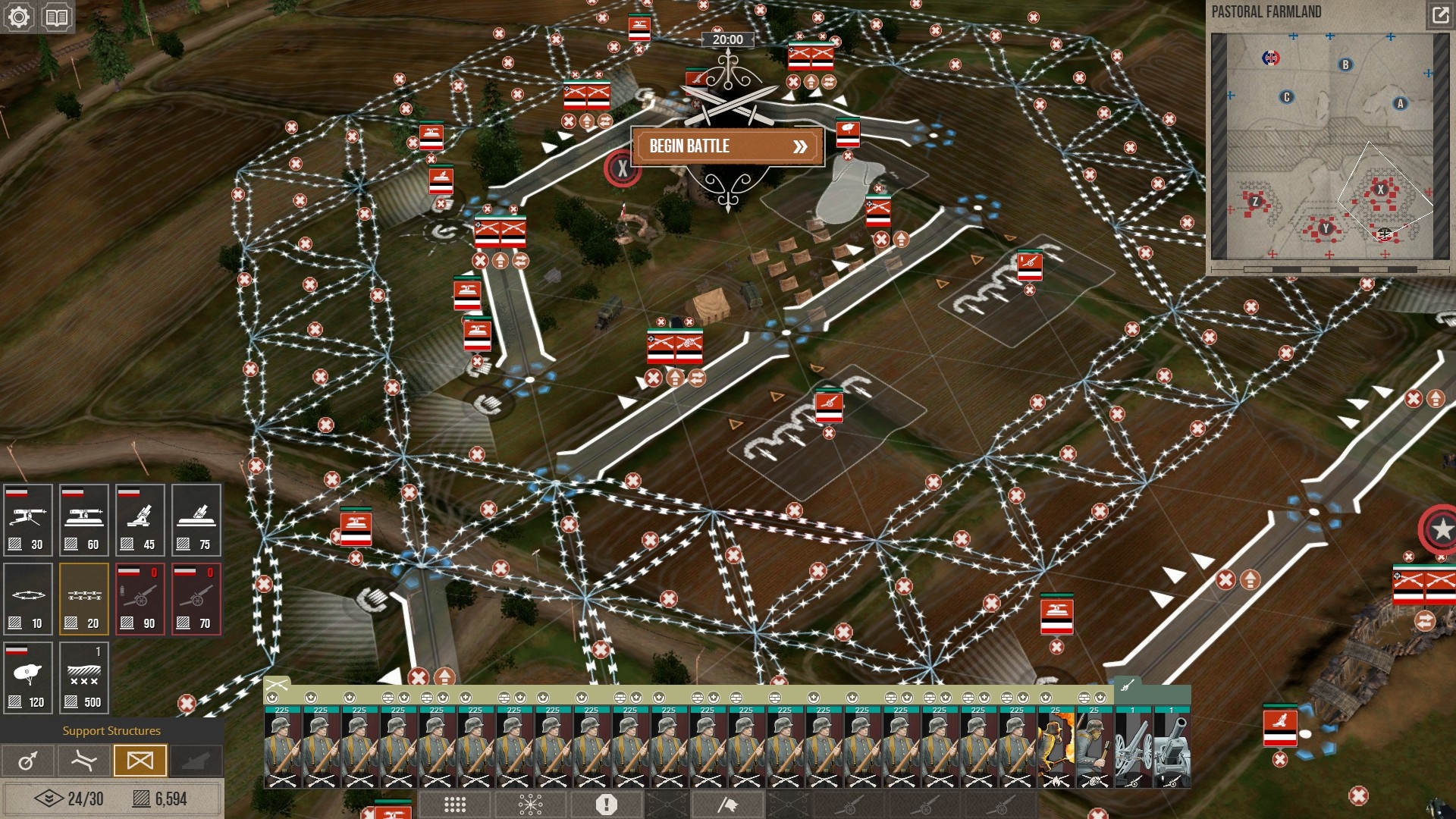
The Great War: Western Front won’t move you to tears. Novel, informed, and engrossing, it may, however, deplete your midnight oil reserves, add WWI books to your nightstand, and make you wonder why so few wargames allow us to design defensive works.


Thanks Tim, you’ve tipped me over the edge on this one. Happy Easter!
BAH. I missed the obvious “over the top” gag.
Must try harder.
Just how clapped out is your rig Tim? I ask as I upgraded from a 980Ti Strix to a 3080 last year and the 980 is still sitting in anti-static bag upstairs. It was quite happily playing games on my 1440p monitor when I upgraded it – I have a Reverb G2 so it couldn’t manage that, which is why I upgraded – but it’s next door to valueless so if it would be a worthwhile upgrade for you, you’d be welcome to it?
Thanks, that’s a very kind offer. I’m using a Gigabyte GeForce GTX 1050 Ti (4 GB, GDDR5, 128 bit) at the moment so that sounds like a worthwhile upgrade. Expect an email!
Nice writeup, I was curious about this one!
Game looks like a fun afternoon spent! Minus the gamey tanks, this sounds like the WWI RTS I’ve always envisioned.
Tim — what are the full specs of your machine? I’m willing to chip in on some new techno-gubbins to accompany VFRHawk’s 980ti offer. Are you willing to upgrade to Win10? (I can send you a guide to make it more like Win7 – ClassicShell plus a few console commands to rid you of Cortana and her accompanying spy/adware)
Morale +1. Thanks. Most of the THC PC (i5-2500K CPU, 8GB RAM, GeForce GTX 1050 Ti, Windows 7) dates from circa 2011. Amazingly it still handles most things just fine. Windows 7 is starting to cause the odd problem. It’s mainly the thought of losing access to dozens of beloved ‘Dusty But Trusty’ titles that puts me off changing the OS. However with Steam set to end Win 7 support at the end of the year, I guess it’s time I finally bit the bullet.
Tim, I was replying to this comment when my wife had a scary moment that round-about lead to us discovering we’ll be having our first child! We will most likely be downsizing soon and selling/donating flightsticks and parts to her PC. She has a 2070 and 3700x, 16gb ram and a pretty good Asrock Mobo. I’ll keep you up to date, but possibly you could keep your old machine for your dusty’s and have something newer for the 2020’s. Your writing is worth it, and I’d rather you spend my airdrop $$ on crumpets and cheeky Nandos.
I’ll email you when things get less insane here.
Congratulations! Building a new PC from scratch is probably the way I’ll go. You’ll know when the new THC rig arrives because of the deluge of Flight Simulator articles in the weeks that follow.
Initially wasn’t interested in this due to my general aversion to RTS games (I lack the reflexes to survive long in them), however your write-up and seeing it in action on YT has brought me around to adding it to my Steam wishlist.
The only thing that will tip me to click the “buy now” button would be as you noted: Persistent bodies (what’s WWI without the horror of the meat-grinder battlefields?) and some sort of “In Memorium” screen with wounded and casualties – again the horror of WWI needs to be a fundamental aspect of this game.
Also barbed wire is too expensive.